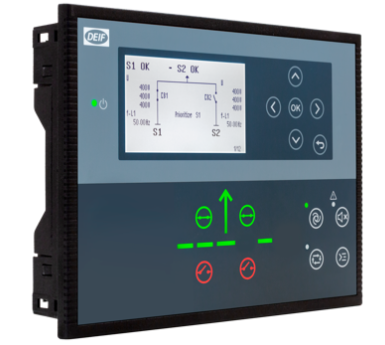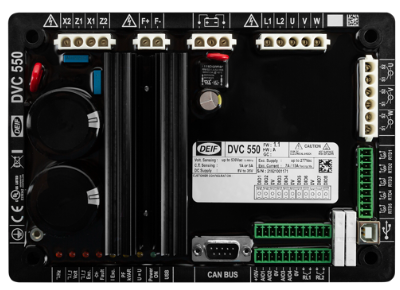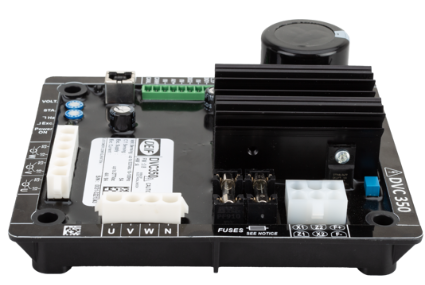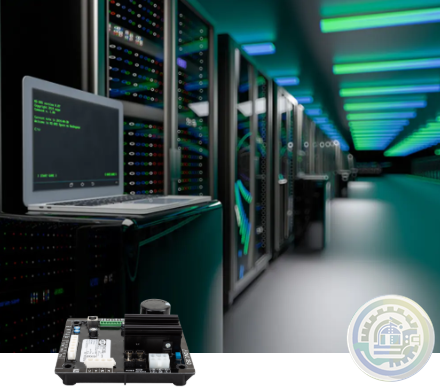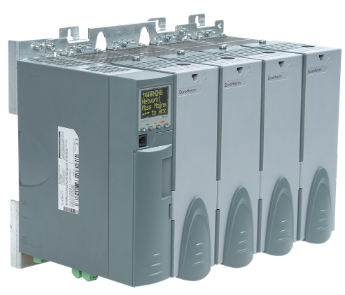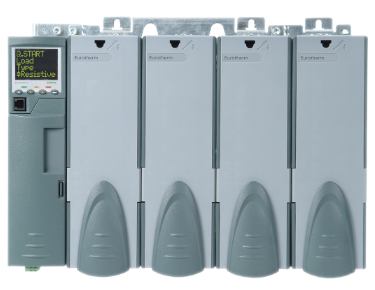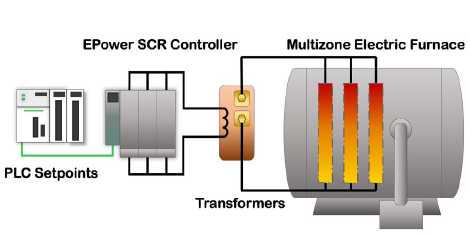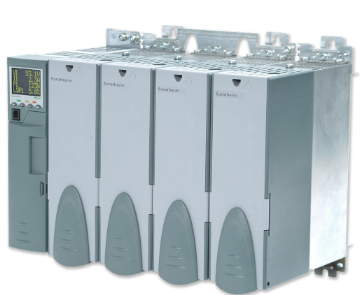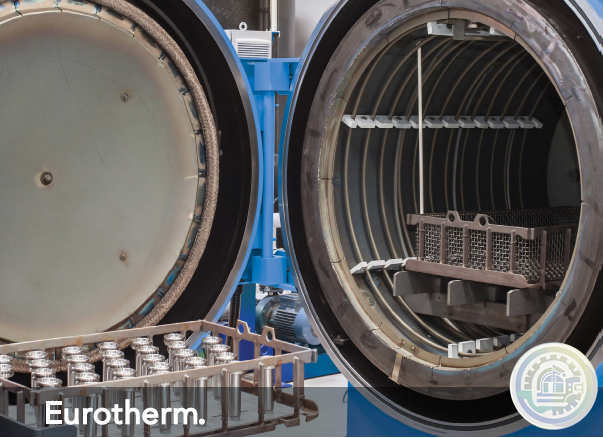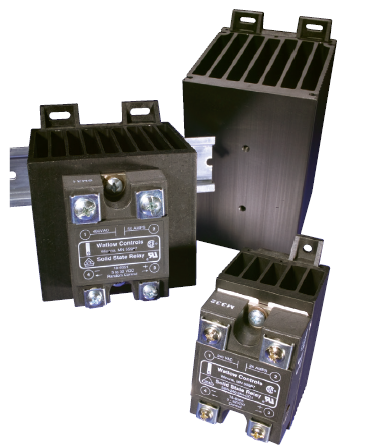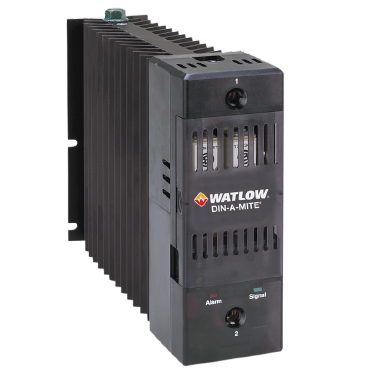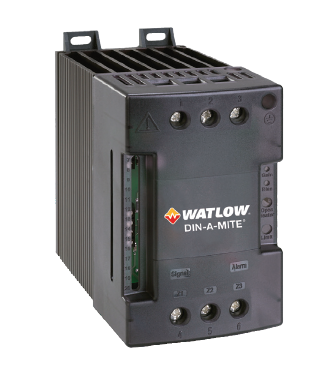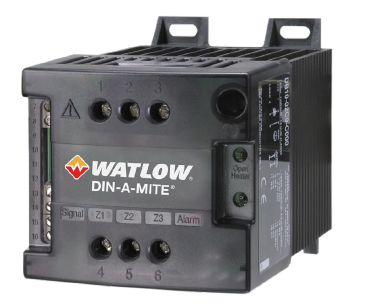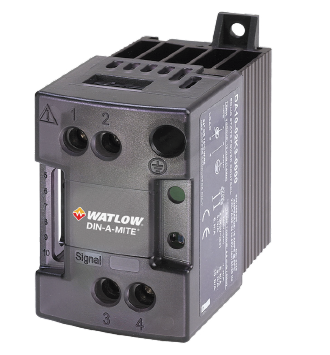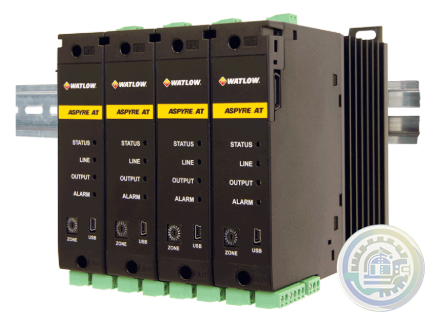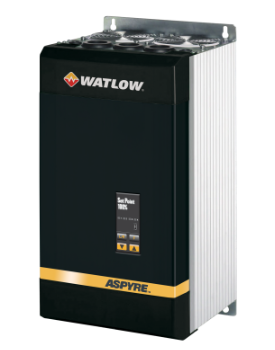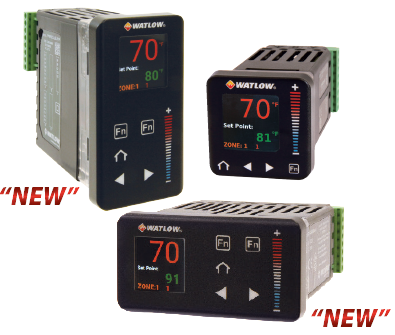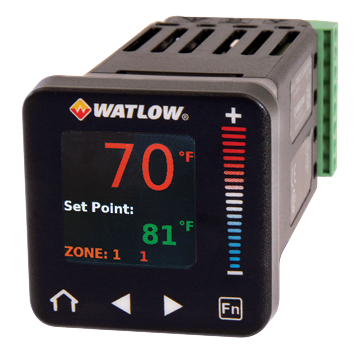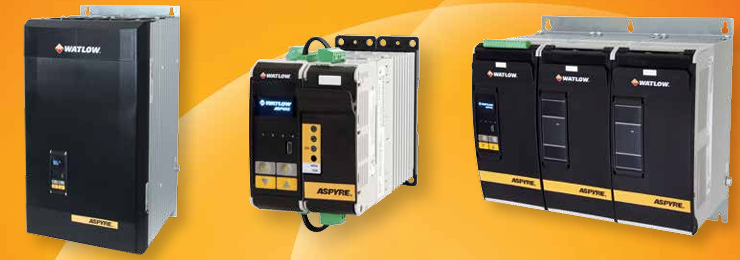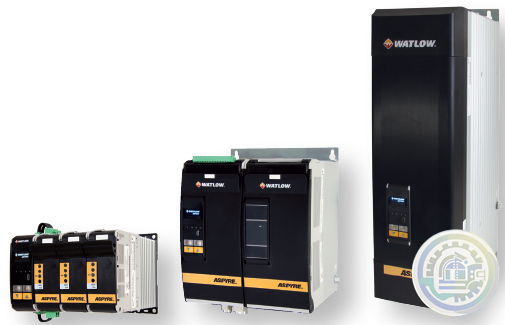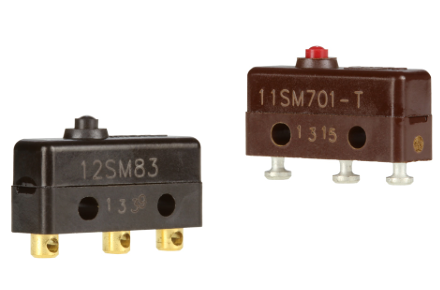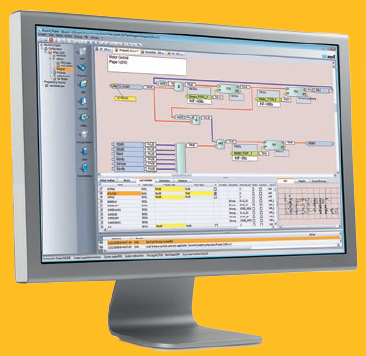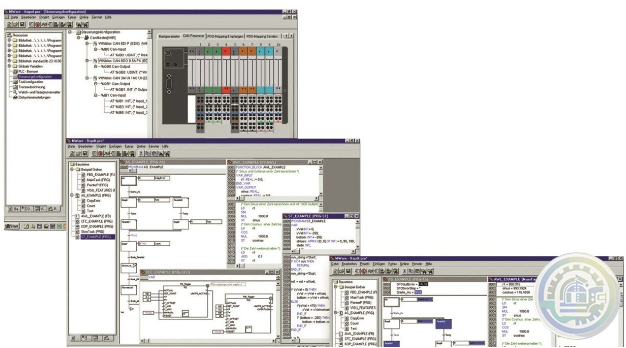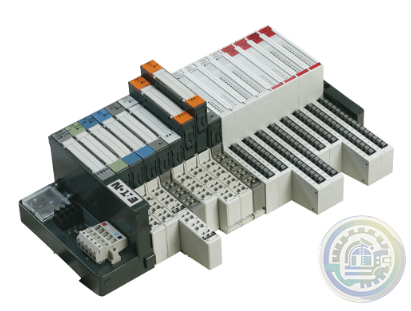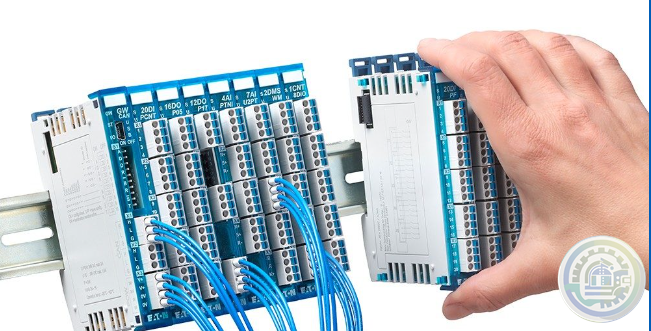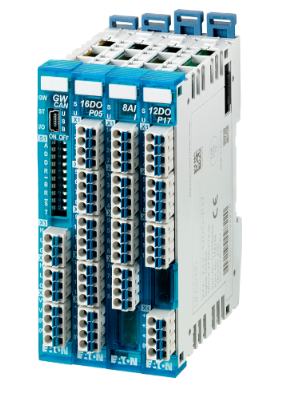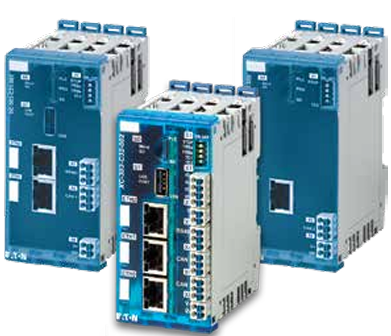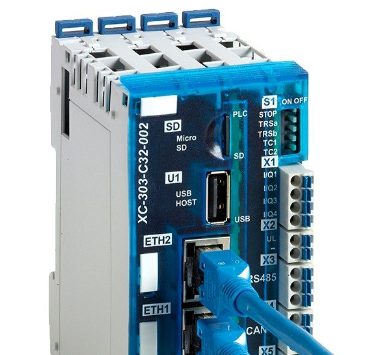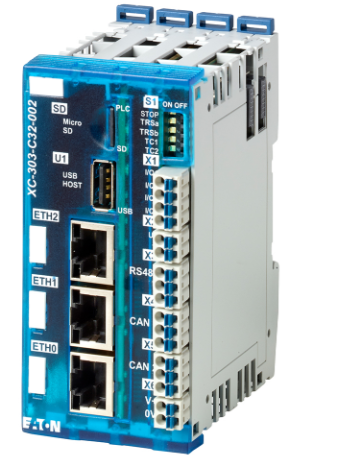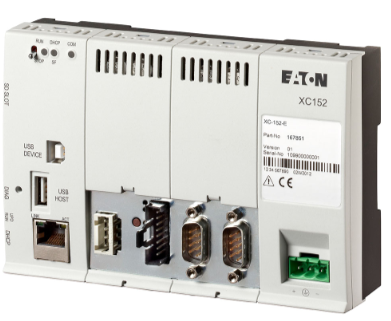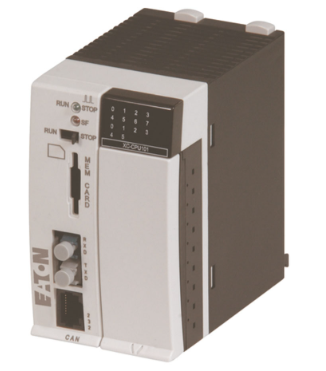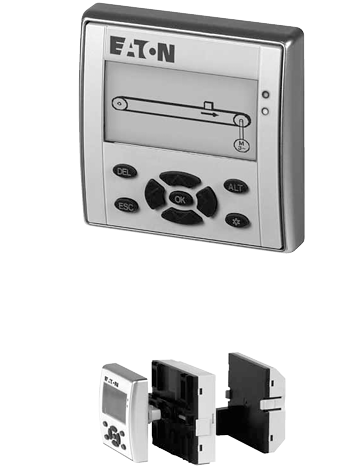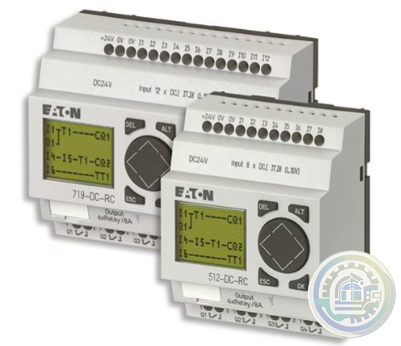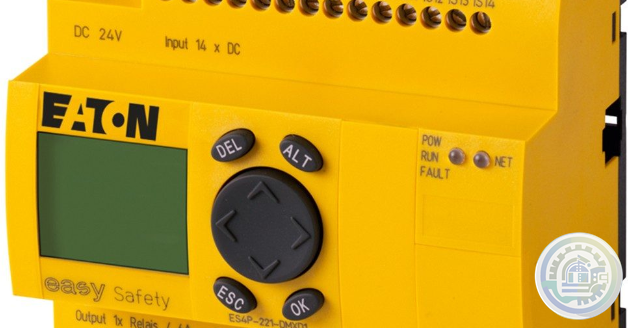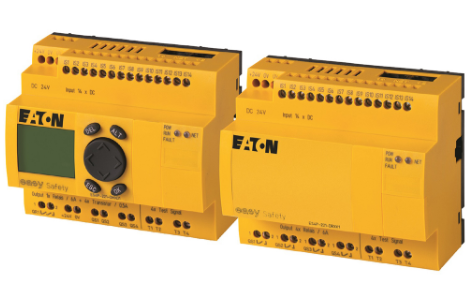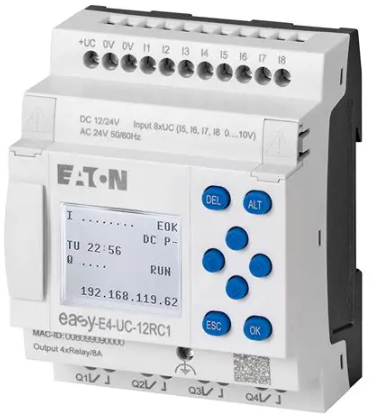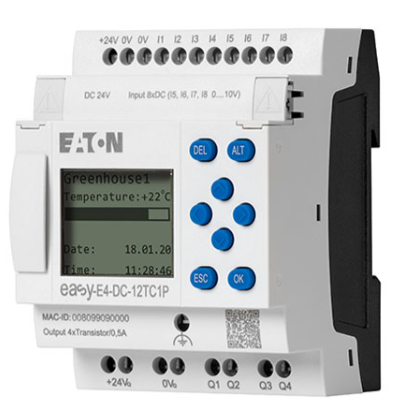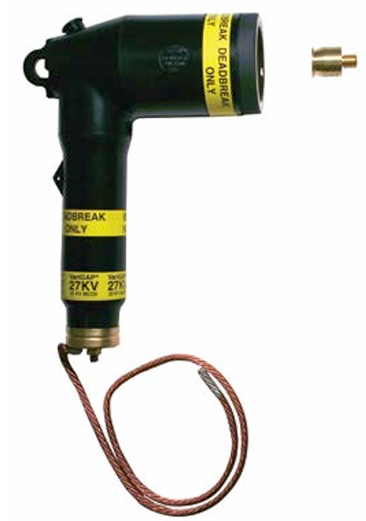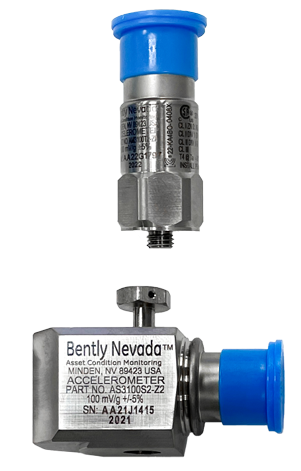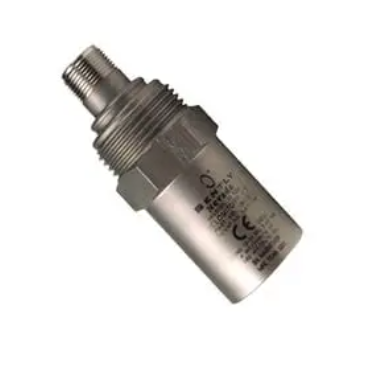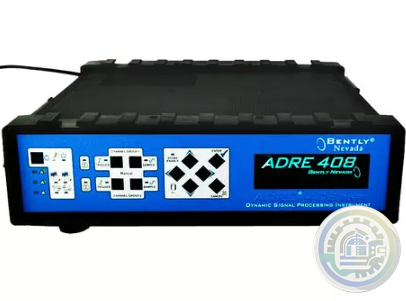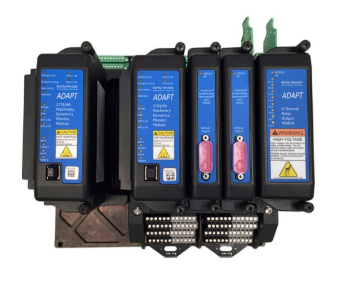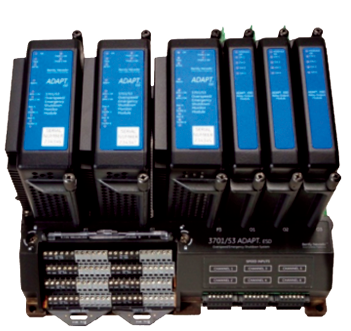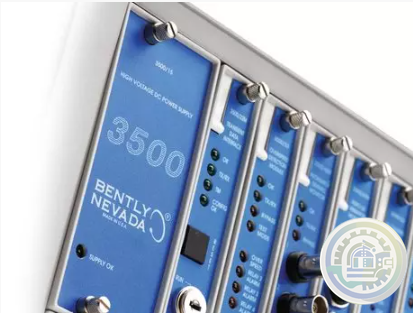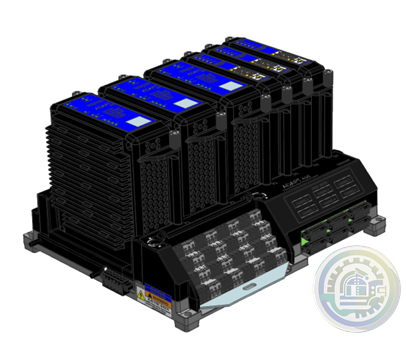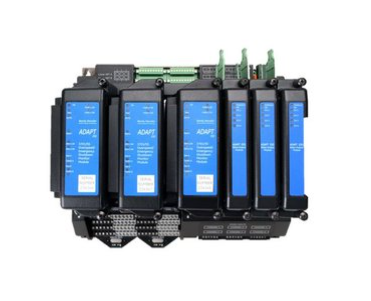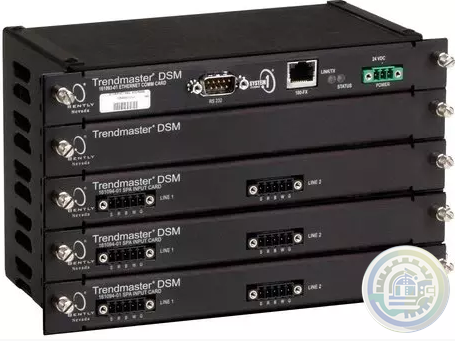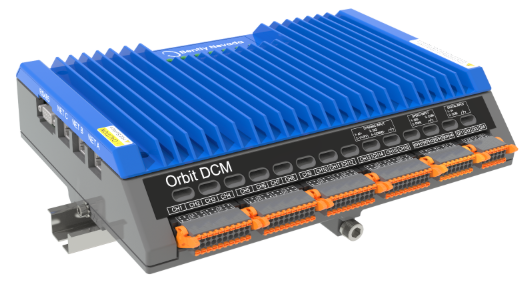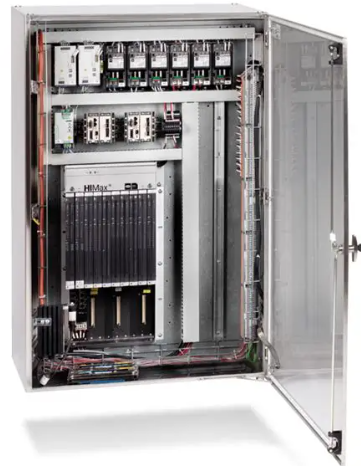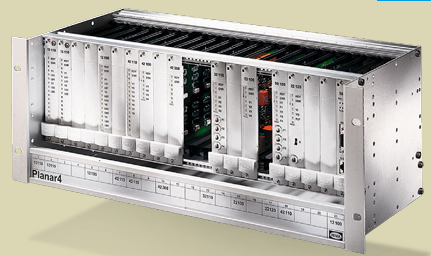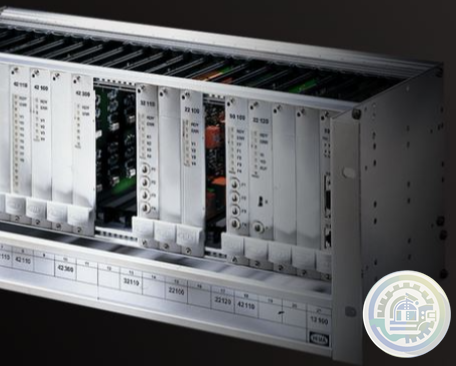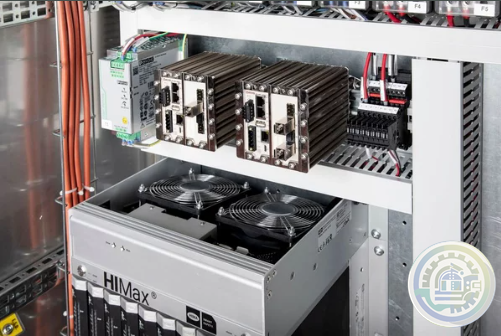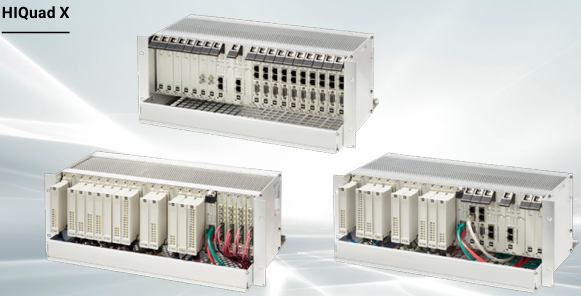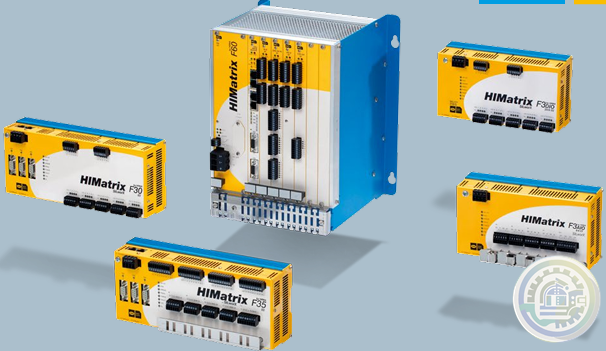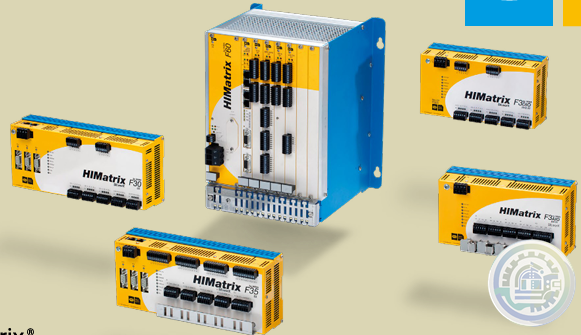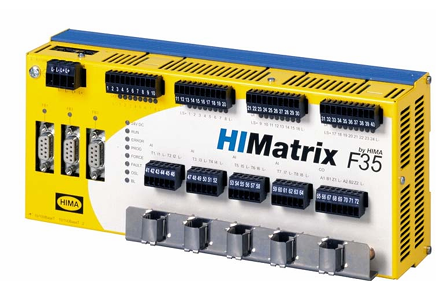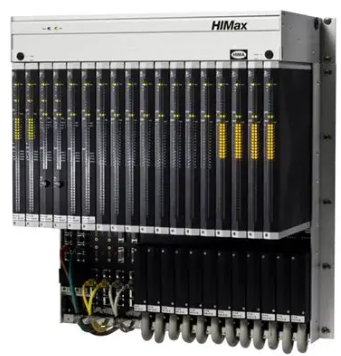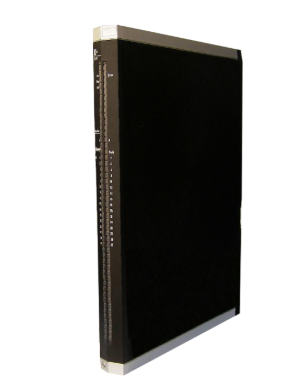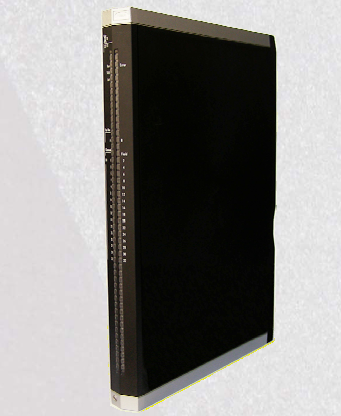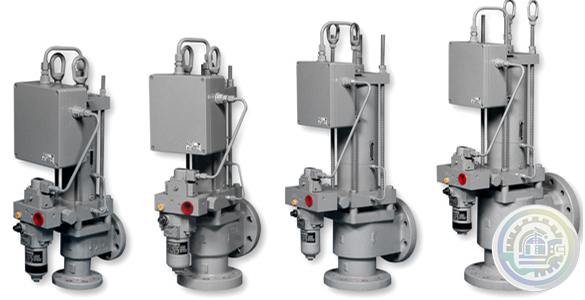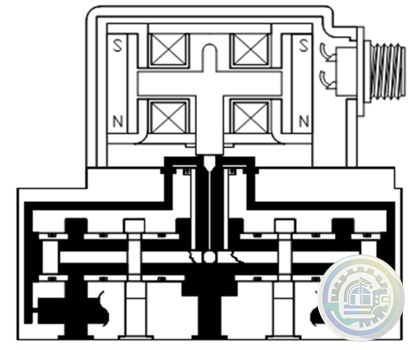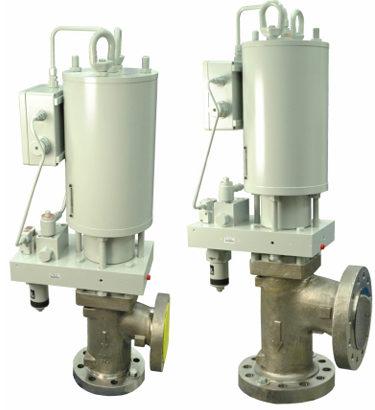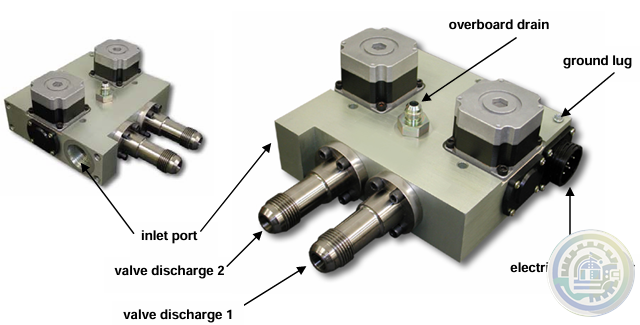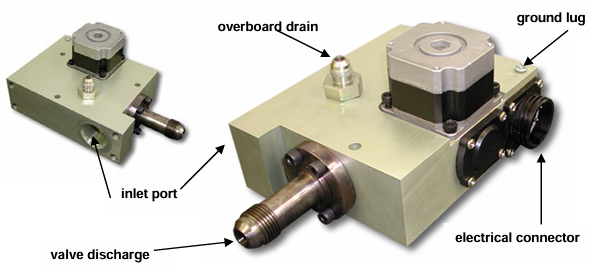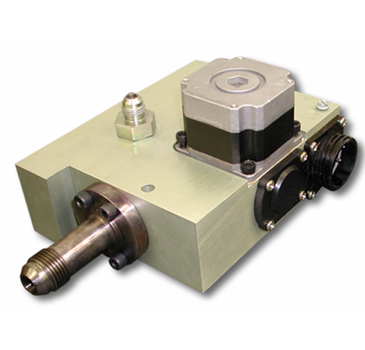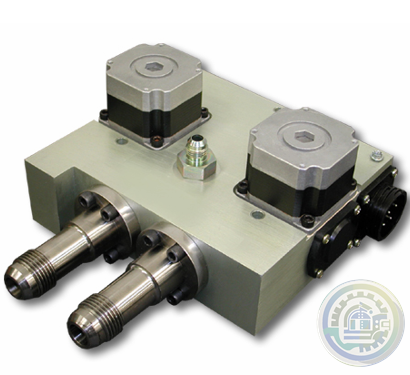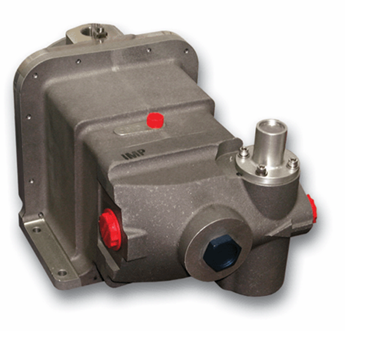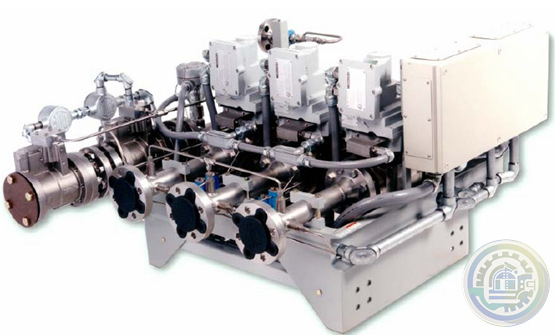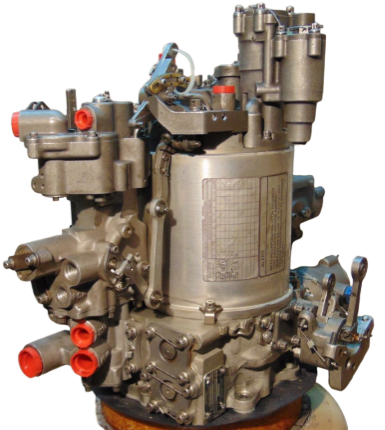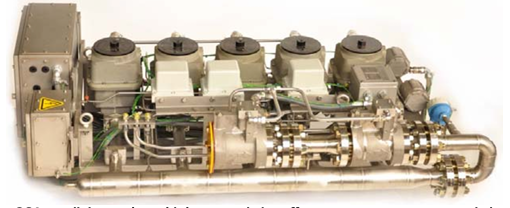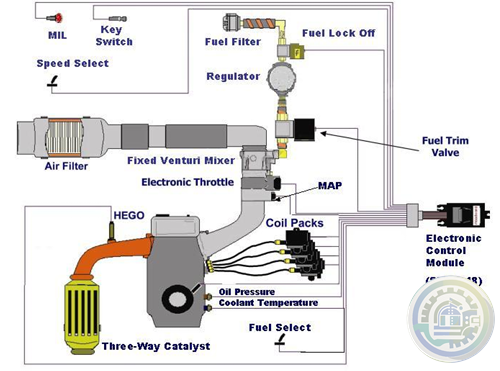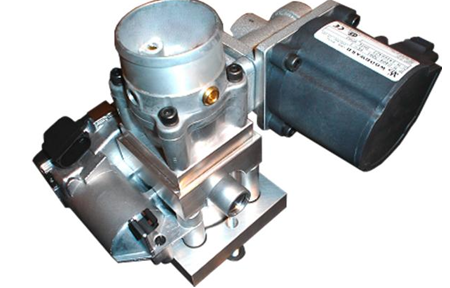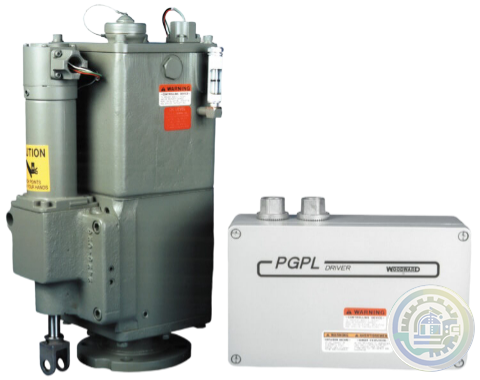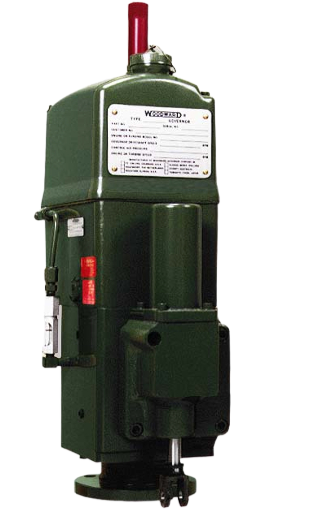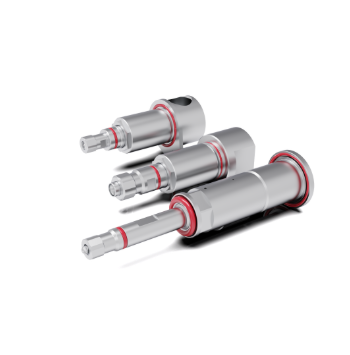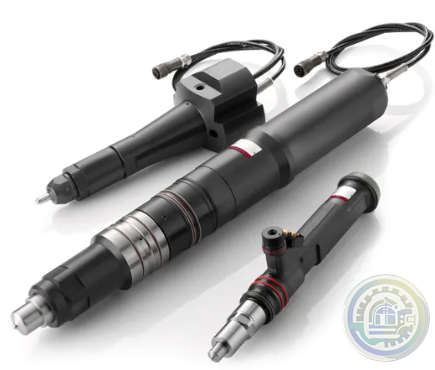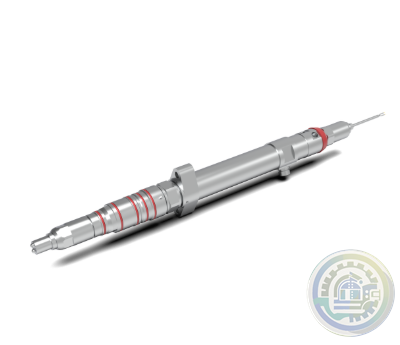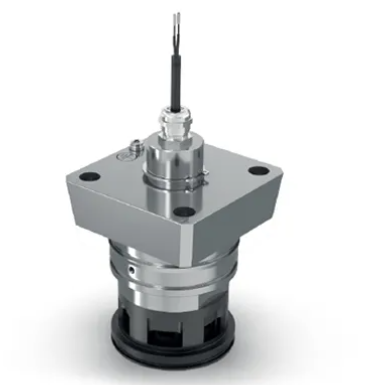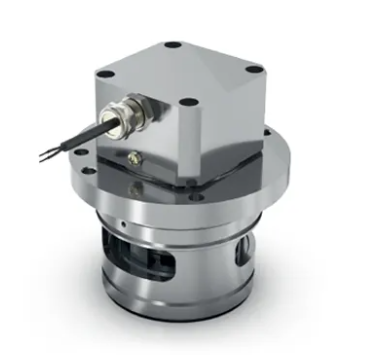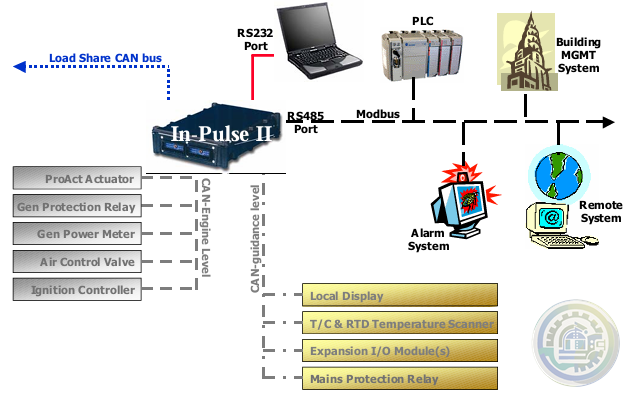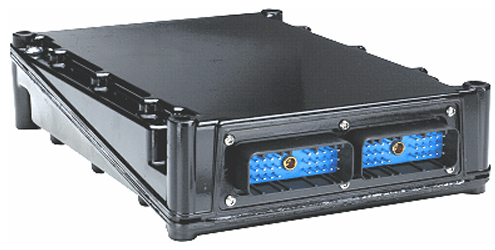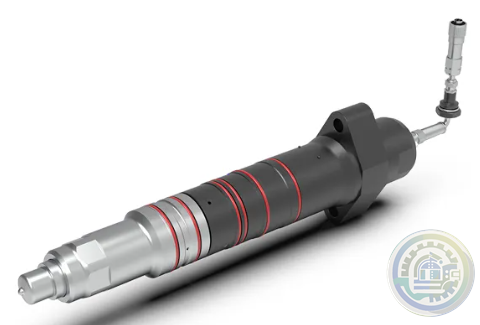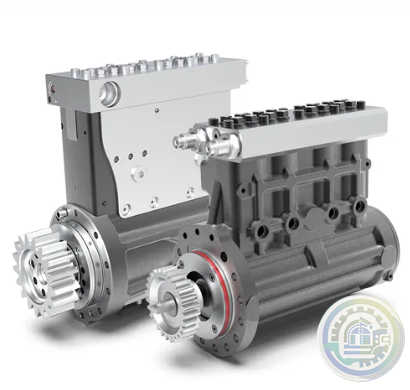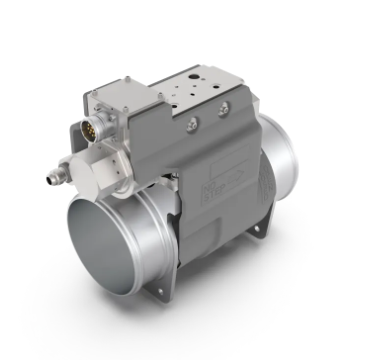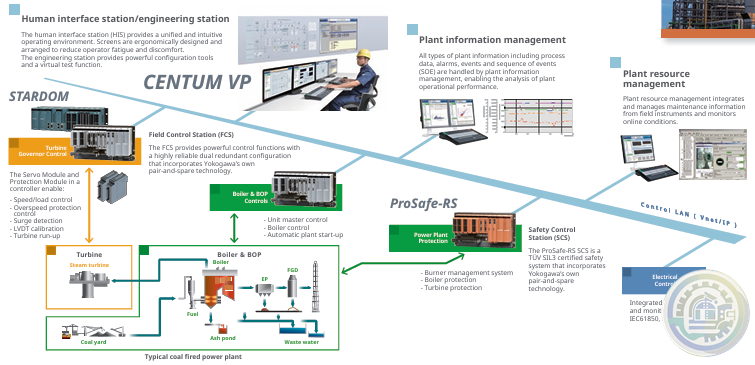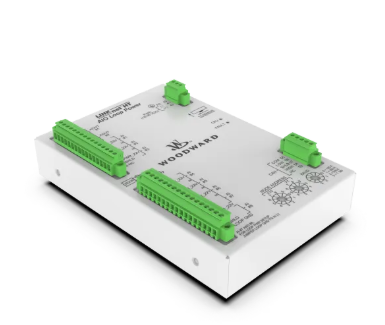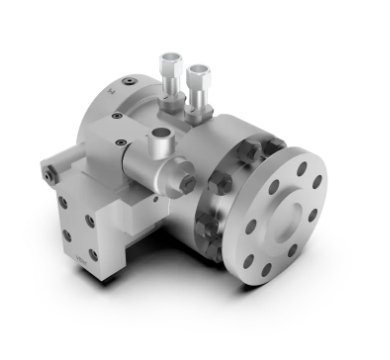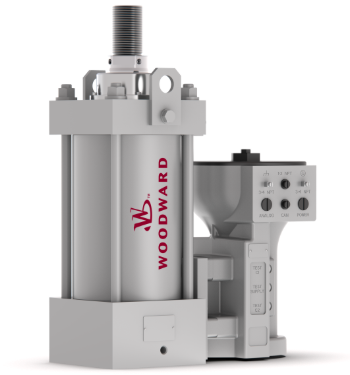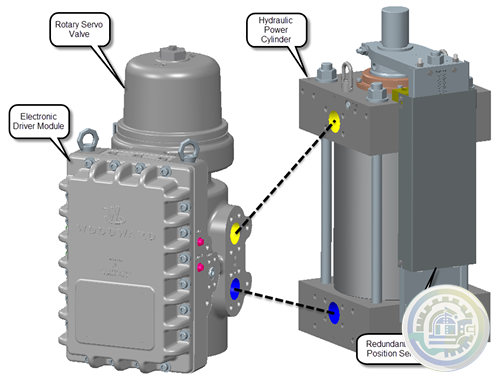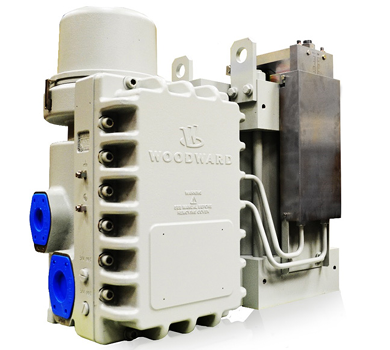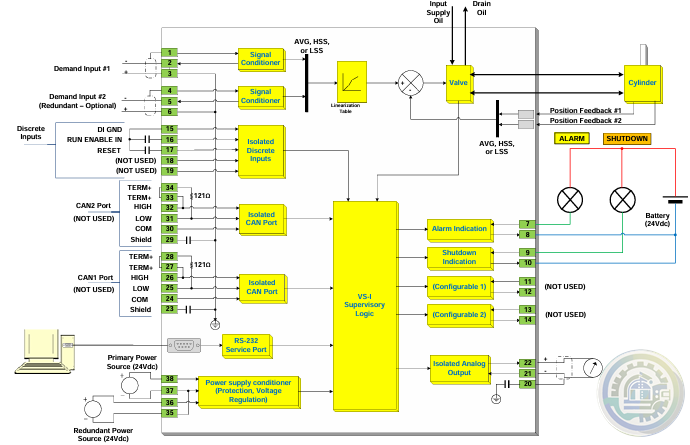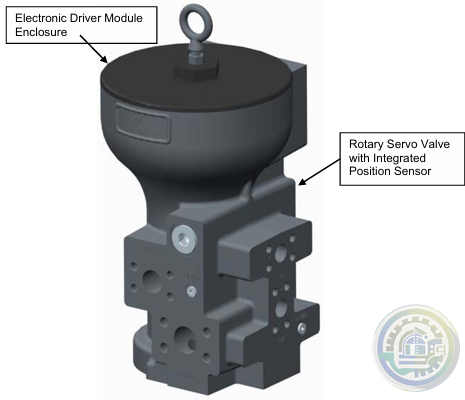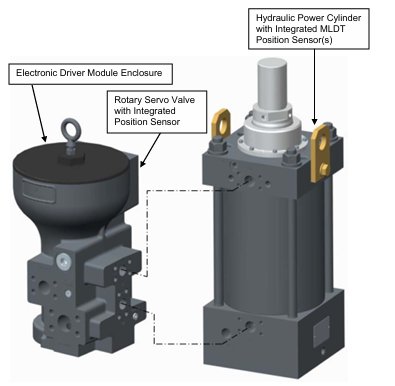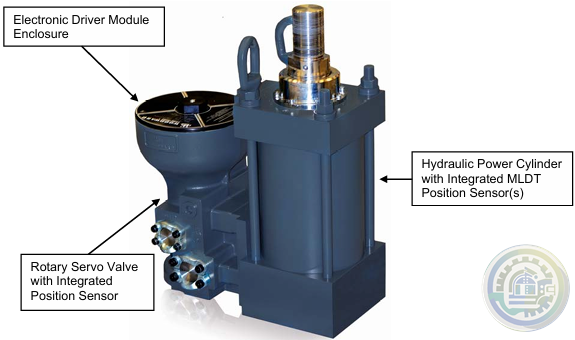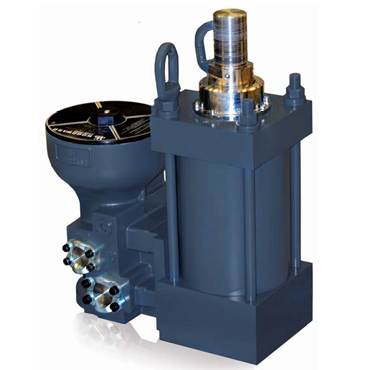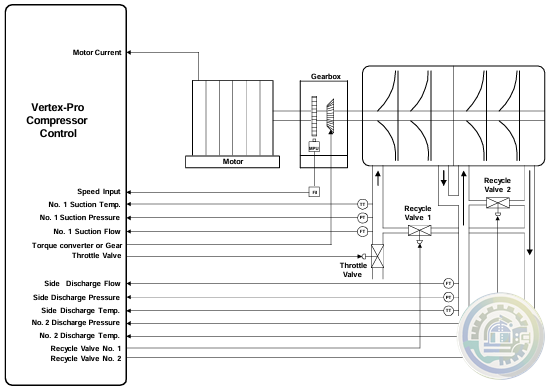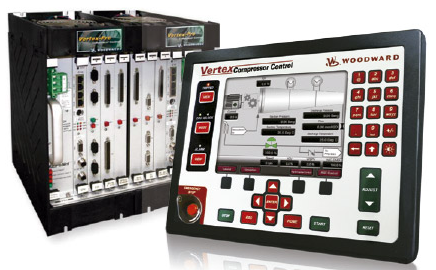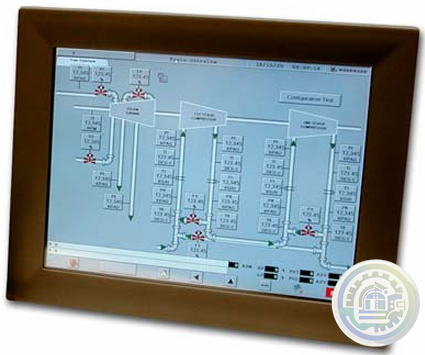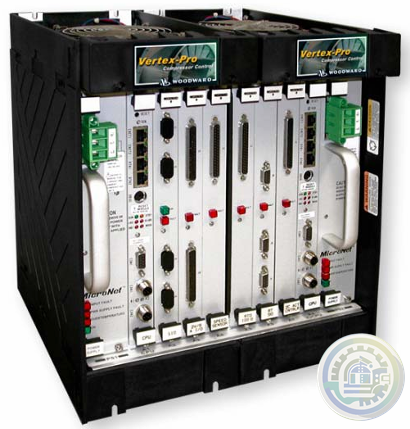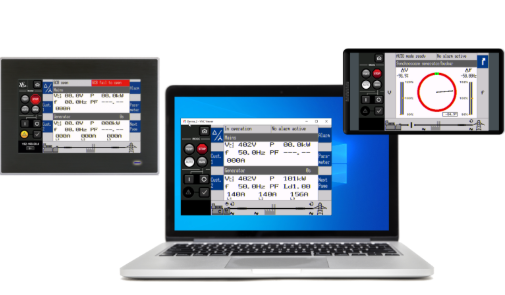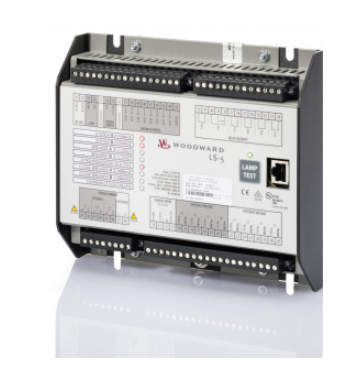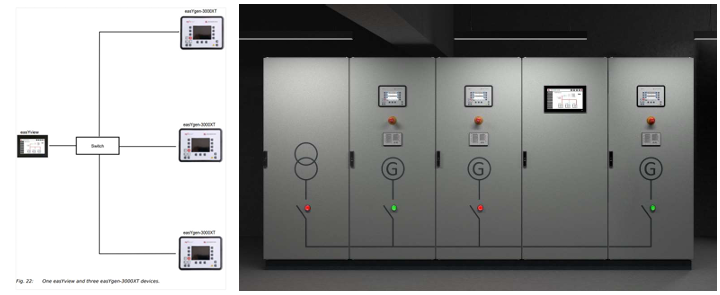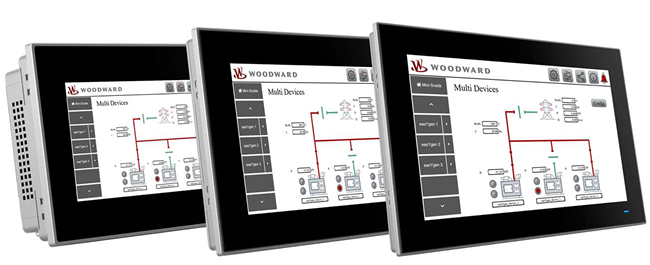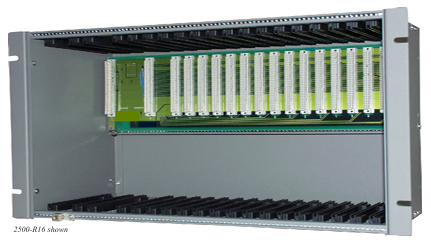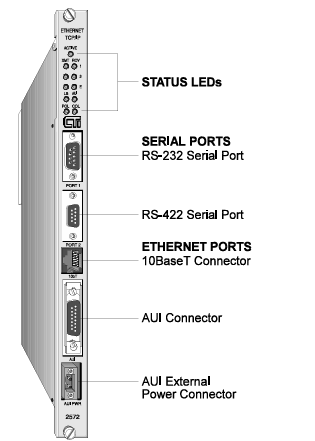-
A-B 20G11BC1K1JN0NNNNN PowerFlex Air Cooled 755 AC Drive
-
A-B 20P41AF452RA0NNN PowerFlex 452 A DC Drive
-
A-B 20GHAJC540JN0NNNNN PowerFlex Extra Tough 755 AC Drive
-
EPRO MMS6823 9100-00001-05 Displacement Monitor Module
-
GE LP-33 SERIES UPS DISPLAY & CONTROL PANEL LP33
-
Streamline power transfer with DEIF's AGC 150 ATS controller
-
DEIF AGC 150 ATS: Advanced Generator Transfer Switch for Seamless Power Management
-
DEIF DVC 550 Automatic voltage control
-
DEIF Optimize Your Power Systems with DEIF's DVC 550
-
DEIF DVC 350 Digital automatic voltage regulator (AVR)
-
DEIF Advanced Features of DVC 350 Digital Automatic Voltage Regulator
-
DEIF Digital Voltage Controller DVC 550
-
Watlow EPower™ Controller Revolutionary modularity and configurability to meet your needs
-
Watlow Eurotherm® EPower™ Controller
-
Watlow Eurotherm A standardized upgrade solution
-
Watlow Eurotherm Cost efficiency for electric furnaces
-
Watlow Eurotherm Energy efficiency for electric heat treatment furnaces
-
Watlow Solid State Relays (SSR)
-
Watlow DIN-A-MITE® D silicon controlled rectifier (SCR) power controller
-
Watlow DIN-A-MITE® C silicon controlled rectifier (SCR) power controller
-
Watlow DIN-A-MITE® B Power Controller
-
Watlow DIN-A-MITE® A Power Switching Devices
-
Watlow ASPYRE® AT Power Controllers
-
Watlow ASPYRE® DT SCR Power Controllers
-
Watlow PM PLUS™ Controller Features and Benefits
-
Watlow PM PLUS™ Controller
-
Watlow ASPYRE To Elevate Your System
-
Watlow ASPYRE® DT Power Controllers
-
Honeywell MICRO SWITCH Premium Subminiature Basic Switches
-
HIMA SILworX API (application programming interface)
-
HIMA Automated testing with SILworX Smart Safety Test
-
HIMA SILworX The world’s most advanced safety application manager
-
Eaton CODESYS software
-
Eaton CODESYS version 3 Integrated fieldbus configuration
-
Eaton XI/ON I/O system
-
Eaton XN300 modules High modularity with a small footprint
-
Eaton XN300 I/O system
-
Eaton The XC300 modular PLC: Powerful communication
-
Eaton The three device variants of the XC300 Comprehensive functions and interfaces
-
Eaton XC300 modular programmable logic controllers
-
Eaton XC150 compact programmable logic controllers
-
Eaton XC100/200 modular programmable logic controllers
-
Eaton Multi-Function Display MFD-Titan
-
Eaton Legacy Easy programmable relays
-
Eaton easySafety Safety for people and machines
-
Eaton easySafety programmable safety relays
-
Eaton easyE4 programmable relays
-
Eaton easyE4 nano programmable logic controllers
-
Eaton COOPER POWER SERIES DirectConnect elbow arrester
-
Bently Nevada IEPE Accelerometer Series
-
Bently Nevada Velocity Sensors & Accelerometers
-
Bently Nevada ADRE - Data Acquisition & Machine Diagnostics System
-
Bently Nevada 3701/55 Emergency Shutdown Device
-
Bently Nevada Asset Condition Monitoring
-
Bently Nevada 3500 Machinery Protection Systems
-
Bently Nevada ADAPT ESD Relay Module
-
Bently Nevada Typical (and recommended) applications of the ADAPT ESD
-
Bently Nevada 3701/55 ADAPT (ESD) Emergency Shutdown Device
-
Bently Nevada Online Condition Monitoring Systems
-
Bently Nevada Trendmaster Online Condition Monitoring System
-
Bently Nevada Orbit Distributed Condition Monitoring
-
HIMA The HIJunctionBox is part of the Smart Safety Platform
-
HIMA HIJunctionBox Straightforward Safety
-
HIMA Planar4 Where Ultimate Safety Counts
-
HIMA HIQuad Lifecycle & Modernization
-
HIMA HIQuad X A New Dimension of Performance for Your Safety System
-
HIMA Communication Features of HIQuad X
-
HIMA Flexible SIL 4 Controllers SYSTEM FOR THE RAIL INDUSTRY
-
HIMA HIMatrix SYSTEMS Uniquely Fast, Uniquely Flexible
-
HIMA F35 HIMatrix Safety-Related Controller
-
HIMA HIMax Flexible Safety for Maximum Profitability
-
HIMA X-COM 01 Communication Module
-
HIMA X-DI 64 01 Digital Input Module
-
Woodward Oil Management
-
Woodward SonicFlo™ Gas Fuel Control Valve With Electric Trip
-
Woodward SonicFlo™ Gas Triple Coil Electrohydraulic Servo Valve Assembly
-
Woodward SonicFlo™ Gas Valves Hydraulically Actuated
-
Woodward Discrete Output for Driver Status Indication
-
Woodward PWM Input for Position Demand
-
Woodward The Swift valve is a sonic flow-metering valve
-
Woodward Swift™ Gas Metering System
-
Woodward LQ6 Liquid Fuel Valve with On‐board Driver
-
Woodward Fuel Metering System Integration Capabilities
-
Woodward DLE/DLN for Aeroderivative Turbine Platforms
-
Woodward Fuel Metering Systems
-
Woodward PG-07 controls Sequential spark ignition
-
Woodward PG-07 CONTROL SYSTEM FEATURES
-
Woodward PG-07 Power Generation & Stationary Control System
-
Woodward PG‐PL Governor
-
Woodward Air Management
-
Woodward Engine Actuation Systems
-
Woodward Fuel Injection and Ignition Systems
-
Woodward Fuel Control Systems
-
Woodward Smart Injector Technology Key Product Variants Include
-
Woodward P2X Features & Functionality
-
Woodward P2X Multi-Fuel Injectors
-
Woodward SOGAV Gas Valves
-
Woodward SOGAV Key Product Variants Include
-
Woodward In-Pulse™ ll Self‐Diagnostics
-
Woodward In-Pulse ll Fuel Injection Control
-
Woodward Dual-Fuel Injectors
-
Woodward High-Pressure Pumps
-
Woodward offers a growing line of air valves
-
YOKOGAWA Turbine Control Solutions
-
Emerson Turbine Control
- Glassman
- Johnson Controls
- Studer
- Watlow
- AEG
- ADVANCED
- KEBA
- Bristol Babcock
- Rolls-Royce
- Aerotech
- APPLIED MATERIALS
- Basler
- SAACKE
- BENDER
- Kollmorgen
- MEGGITT
- METSO
- MITSUBISHI
- MTL
- HIMA
- Siemens
- BACHMANN
- AMAT
- DEIF
- DELTATAU
- EATON
- ELAU
- LAM
- SCHNEIDER
- Advantest
- ABB
- GE
- Emerson
- Motorola
- A-B
- KUKA
- Abaco
- HITACHI
- SST
- Vibro-Meter
- Rexroth
- Prosoft
- DFI
- Scanlab
- Reliance
- Parker
- Woodward
- MOOG
- NI
- FOXBORO
- Triconex
- Bently
- ALSTOM
- YOKOGAWA
- B&R
- UNIOP
- KONGSBERG
- Honeywell
- Omron
- CTI
- EPRO
- Tell:+86-18144100983
- email:kongjiangauto@163.com
- Application:wind/ petroleum/ chemical/ natural gas/ Marine/ mining/ aviation/ electronics/ steel/ nuclear power/ electric power/ coking/ air separation and so on
- Series:PLC/ DCS/ servo/ analog/ Ethernet/ digital/ redundant module/ tension system/ excitation/ generator management/ human-machine interface/ detection card/ sensor/ AC drive/ etc
Part Number IS200DAMEG1A Manufacturer General Electric Country of Manufacture As Per GE Manufacturing Policy Series Mark VI/VIe Function Module Availability In StockThe IS200DAMEG1A is a gate amplifier/interface board developed by General Electric as part of the GE drive control system. This board connects power switching devices in the Innovation Series control rack. Designed specifically for low-voltage drives, it interfaces between IGBTs (Insulated Gate Bipolar Transistors) and the control rack. Notably, the board lacks test points, configurable items, or fuses and serves as an interface without amplification or power input.

Features Interface Without Amplification: The DAME board connects IGBT power switching devices to the control rack without amplifying signals or requiring power input. It is one of six board variations and is rated for drives with 65 frames. Single Board for Three Phases: The DAME board is designed for use with phase leg drives, and a single board can interface with all three phases. Although different IGBTs are used per phase leg, this board includes only one IGBT module for all phases. Input/Output Connections: The board features three connectors (CPL for phase C marked as U, BPL for phase B marked as V, and APL for phase A marked as W) for connection with the Bridge Personality Interface (BPIA) board. Pin Descriptions: The board has six connectors, with each pin serving different functions. For instance, pin five (_PCOM) is a common pin that connects to the emitter of phases in the upper IGBT model. Replacement Requirements: If the board needs replacement, both the DAME board and IGBT must be replaced together since they are soldered together.
Ensure the power is turned off before removal or insertion to prevent electric shock. Product Attributes Signal Input: The board receives low-level input signals from field devices (sensors, switches, etc.) and amplifies them for further processing. Amplification: An onboard amplifier boosts the input signal to a level suitable for control system processing. Isolation: Electrical isolation is provided between the input and output signals, protecting the control system from electrical noise and surges. Signal Output: The high-level output signal can trigger alarms, control motors or valves, or interface with a PLC or DCS system. Protection: Overvoltage and short-circuit protection features safeguard connected equipment. Board Replacement Procedure Ensure the drive has been deactivated. Open the cabinet door. Use high-voltage equipment to test circuits, ensuring power is off. Place the heatpipe heat exchanger assembly and IGBT modules (with DAME boards) directly below. Disconnect cables from the APL, BPL, and CPL connectors and move them aside. Disconnect the nuts, washers, and spring lock washers holding the shunt cables to the IGBT studs. Reposition the cables to avoid interference during board removal. Remove the two nuts, washers, and spring lock washers holding the outer flex circuit to the IGBT studs. Remove the four Allen-head bolts and washers holding the IGBT module to the heatsink, and remove the module and board.

Unscrew the IGBT module seven studs, washers, and spring lock washers. To Install the IGBT Module with Board Install the seven studs, washers, and spring lock washers in the new IGBT module with DAME board and fully tighten them. Apply an even layer of Dow Corning 340 silicon grease (or equivalent) to the IGBT module's back mounting surface. Insert the four Allen-head bolts and washers, and mount the IGBT module to the heatsink in the same position as before. Tighten the bolts in a diagonal pattern to 40 inch-pounds torque. Reattach the flex circuits to the mounting studs with nuts, washers, and spring lock washers. Reinstall the shunt cable assemblies on the IGBT module studs. Reconnect cables to the new DAME board connectors (APL, BPL, CPL). Inspect connections and drive cabinet for any tools or debris before closing the cabinet door. Output Processing System outputs are portions of calculated data transferred to external hardware interfaces and actuators that control the process. The output voting hardware votes on TMR (Triple Modular Redundant) outputs. Signals are calculated independently by the three controllers, and a voting mechanism combines them into a single output. Output signals are categorized into three types: non-redundant individual I/O network outputs, outputs merged into a single signal by output hardware, and outputs routed separately to the controlled process via external voting hardware. For critical protective signals, a voting relay driver feeds three independent signals into relays with a six-contact voting configuration.
| User name | Member Level | Quantity | Specification | Purchase Date |
|---|


Please do not listen to the advice of non-professional engineers! Cause equipment damage!


wechat/whatsapp:
Email: kongjiangauto@163.com
-
GE LP-33 SERIES UPS DISPLAY & CONTROL PANEL LP33
-
GE CL06A300M IEC Contactor (50 Amp)
-
GE CR2962F2D Plugging Switch NIB
-
General Electric IC500A411DG2 Electrical Rectifier Semiconductor
-
GE IS200BICLH1AFE Interface Module 259B2431DB-G01 BICLH1A
Copyright © 2009 - 2024 Cld , All Rights Reserved K-JIANG All rights reserved















